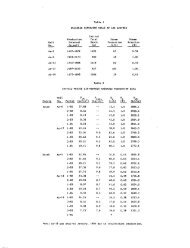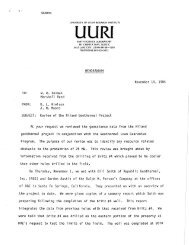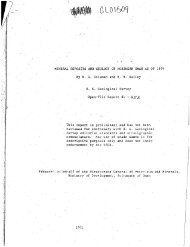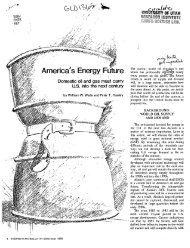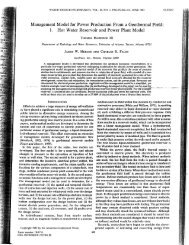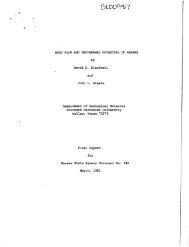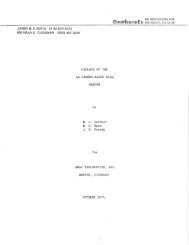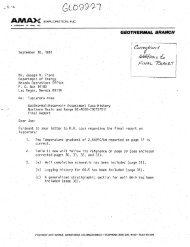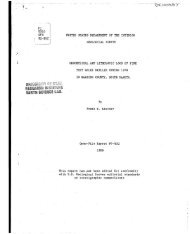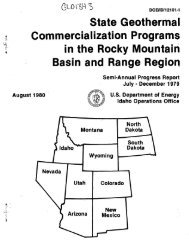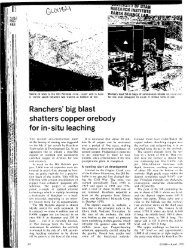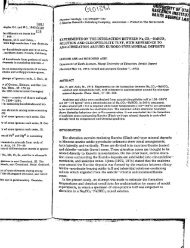"INDUCED POLARIZATION DATA AT ... - University of Utah
"INDUCED POLARIZATION DATA AT ... - University of Utah
"INDUCED POLARIZATION DATA AT ... - University of Utah
You also want an ePaper? Increase the reach of your titles
YUMPU automatically turns print PDFs into web optimized ePapers that Google loves.
the model <strong>of</strong> Figure 8.<br />
CHU<br />
A comparison <strong>of</strong> the phase extrapolated data shows some general<br />
similarities to the original data at 1116Hz, although the extrapolated<br />
phases are somewhat smaller. This probably indicates that at this<br />
frequency the EM coupling is less than the true IP effects.<br />
The phase extrapolation technique gives an estimate <strong>of</strong> the minimum<br />
IP response in the frequency band <strong>of</strong> the quadratic fit. Unfortunately,<br />
host rocks surrounding the geothermal area also exhibit approximately<br />
the same magnitude <strong>of</strong> polarization, if the phase extrapolation is<br />
correct. Hence, thi s particul ar geothennal system is not well<br />
delineated by its IP response between 1116Hz and 1Hz.<br />
Changes in background resistivity, percentages <strong>of</strong> polarizable<br />
materials, grain size, or range <strong>of</strong> grain sizes can each produce changes<br />
in the frequency dependence <strong>of</strong> the IP effect. It is possible that<br />
hydrothermal alteration could produce changes in these parameters which<br />
would cause systematic variations in the frequency dependence <strong>of</strong> the IP<br />
response and thus delineate the geothermal area. However, more<br />
sophisticated coupling removal must be effected if the frequency<br />
dependence <strong>of</strong> the IP response in the data is to be examined.



